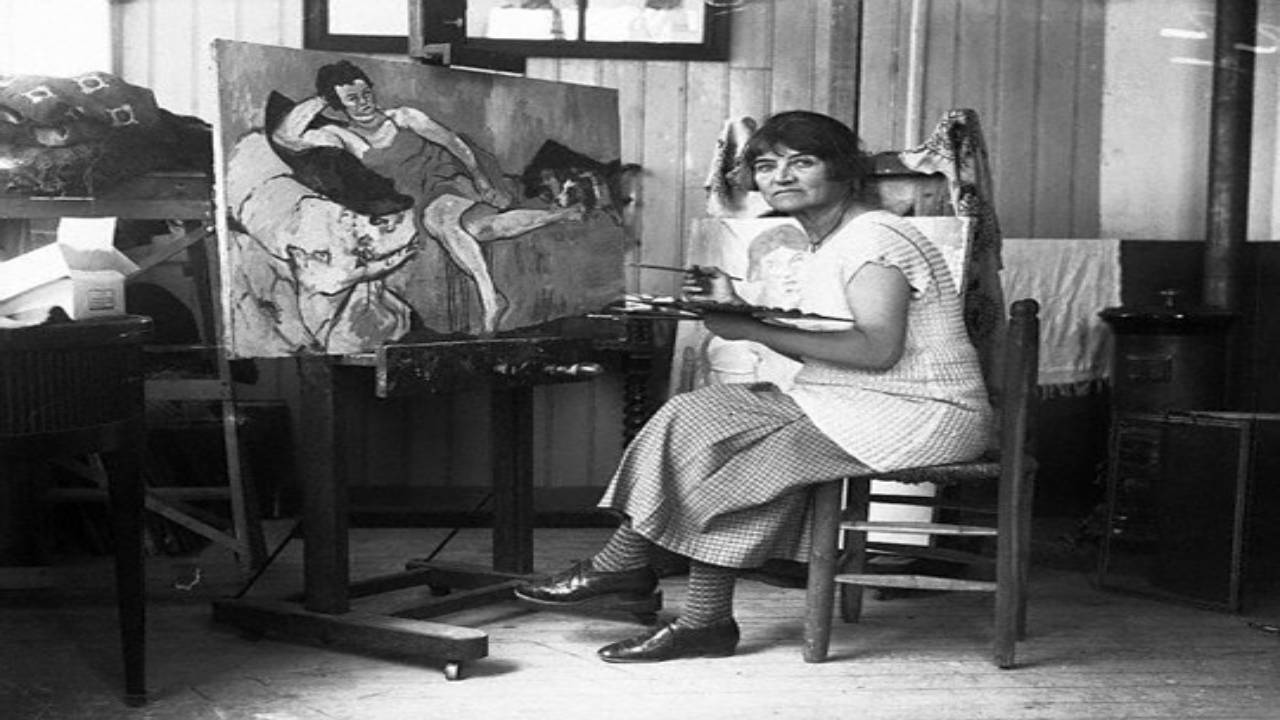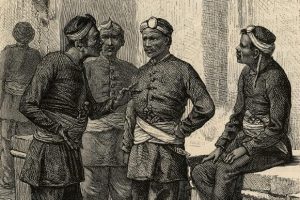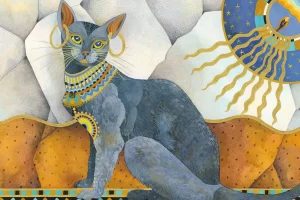Suzanne Valadon is a name that many people even in the world of art are unknown of. Despite her immense success as an artist, Valadon’s name is rarely mentioned while talking about great artists. Mainly because her popularity was overshadowed by her male counterparts.
Valadon wasn’t anything like other female painters that were popular around the 1800s and 1900s. Her paintings reflected a hint of rebellion that most female artists at the time lacked. Her representation of female sexuality was raw and authentic. It is why Suzanne Valadon was one of the most important artists of all time.
Suzanne Valadon’s Early Life.
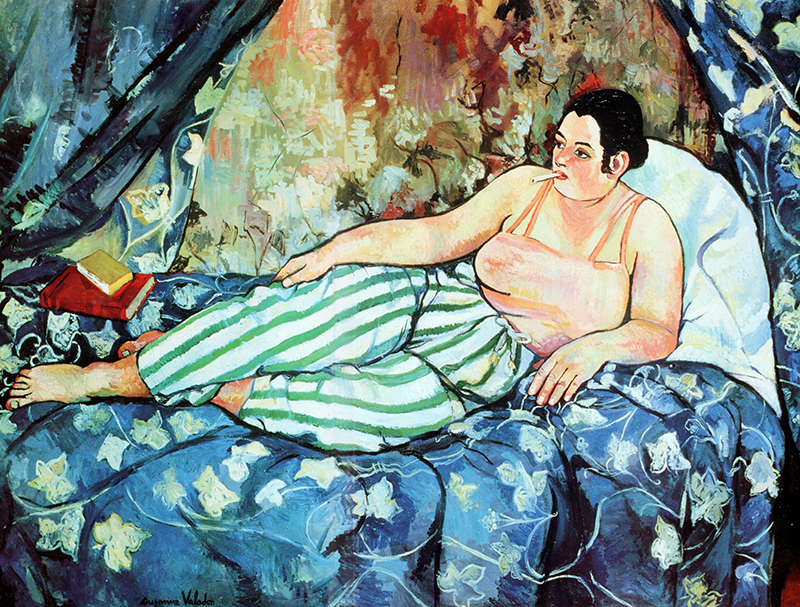
Born in 1865 in Bessines, France, Suzanne’s real name was Marie-Clementine Valadon. She never knew who her father was as she was raised by an unwed, single mother, Madeleine.
Valadon didn’t have access to good education or art lessons while growing up. Her mother was a washerwoman who worked as a housecleaner to feed her and her half-sister.
From Bessines, Valadon and her family moved to Montmartre when she was just five. There, she discovered her love for art as she grew up observing the streets of Montmartre. She was a rebel in her own right who was stubborn and hot-tempered, yet sensitive, charming, and full of energy.
Valadon started working odd jobs at the tender age of 11 to support her mother financially. She was an acrobat in the Molier circus at 15. She fell in love with the job and wanted to continue. However, she had to quit the circus in just six months as she fell off the trapeze and injured her back.
Valadon was a storyteller from an early age. She would tell stories to people created all out of her imaginations. And would draw pictures of anything that grabbed her attention. Her passion and drive for becoming an artist lead her into working as a muse for many different notable artists of the time.
Influence.
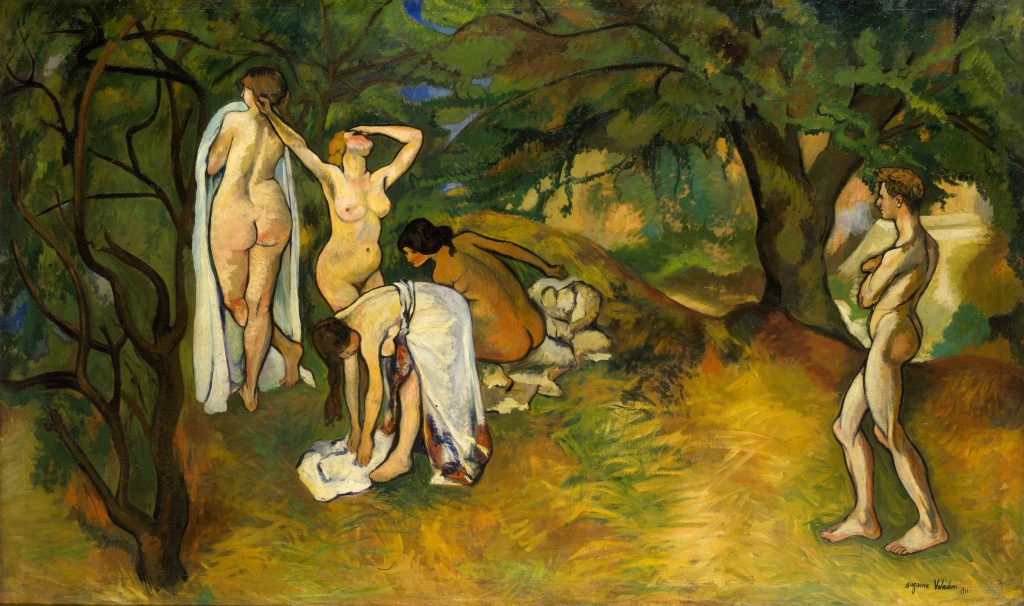
Valadon never had any formal training as she couldn’t afford art lessons. But her passion for art grew more with every passing day. Thus, to learn from the best she started modeling for some of the most notable artists of the time.
She was a muse and appeared in many paintings of artists like Pierre-Auguste Renoir, Puvis de Chavannes, and Henri de Toulouse-Lautrec. She was also their mistress or lover at one point.
Even though being a muse or modeling for artists wasn’t considered a respectable job, Valadon did it for ten years, that too posing nude for many occasions. And with modeling, she also embarked on her journey of becoming an artist. Fortunately for her, the artists she worked with were all able to recognize her true capability and sharpen her skills as time went by.
Despite not being born into privilege, her relationships with great artists gave her the privilege into the lavish world of art. Thus, gaining access to some of the most exciting and influential developments.
At the age of 17, she modeled for Auguste Renoir and was the muse of many of his famous paintings like Dance in the City (1883) and The Bathers (1884-87).
Valadon met Henri de Toulouse-Lautrec soon after giving birth to her son. She then started modeling for him and also became his mistress. It was Toulouse who encouraged her to change her name. So, she changed her name from Marie-Clementine to Suzanne in reference to the 1610 painting, Susanna and the Elders.
Another artist she became close to who inspired her was Edgar Degas. All these artists admired Valadon and her art and encouraged and mentored her along the way.
Suzanne Valadon’s Painting, Style, and Legacy.
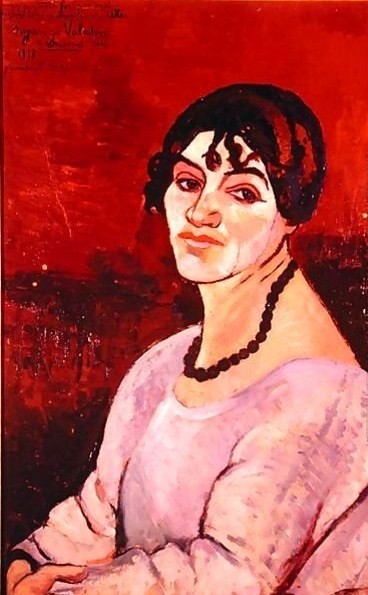
Suzanne Valadon was a post-impressionist painter who never confined to any specific style of painting. She is one of the most important artists of all time due to her representation of women in her paintings.
Her paintings were mostly self-portraits, landscapes, portraits, and nudes.
While most of her female counterparts like Mary Cassatt and Berthe Morisot painted portraits of women but remaining under societal constraints. These women grew up in upper-class French society which gave them the privilege to learn the art. But it also restricted them from painting unorthodox images.
However, Valadon was more experimental and was at ease painting nude portraits of both men and women. Her street upbringing and marginalized status allowed her to break with convention and explore the male-dominant genre of painting.
She mostly used oil pencils, oil paint, and red, and pastel chalks. Her paintings loose brushwork and rich colors with firm black outlines. Valadon’s paintings showed women as they were, with curves and pubic hair.
Her most notable painting to date is The Blue Room, Joy of Life, and Adam and Eve.
She was never drawn to illustrating an idealized woman’s body. However, her paintings were never overtly sexual or vulgar in any sense.
Valadon was a pioneer in breaking the tradition of art. This paved way for the future generation of unorthodox female artists. Her vision of an ideal woman, who is in fact what real women look like, became a legacy for future feminists.
Valadon was the first female painter admitted to the Societe Nationale des Beaux-Arts. She had numerous solo and group exhibitions in the most notable art museums and galleries in France. However, she wasn’t as celebrated outside of France, mainly due to her unorthodox style of painting.
She left a legacy of being a groundbreaking female nude painter in a male-dominant world of art.
Personal Life.
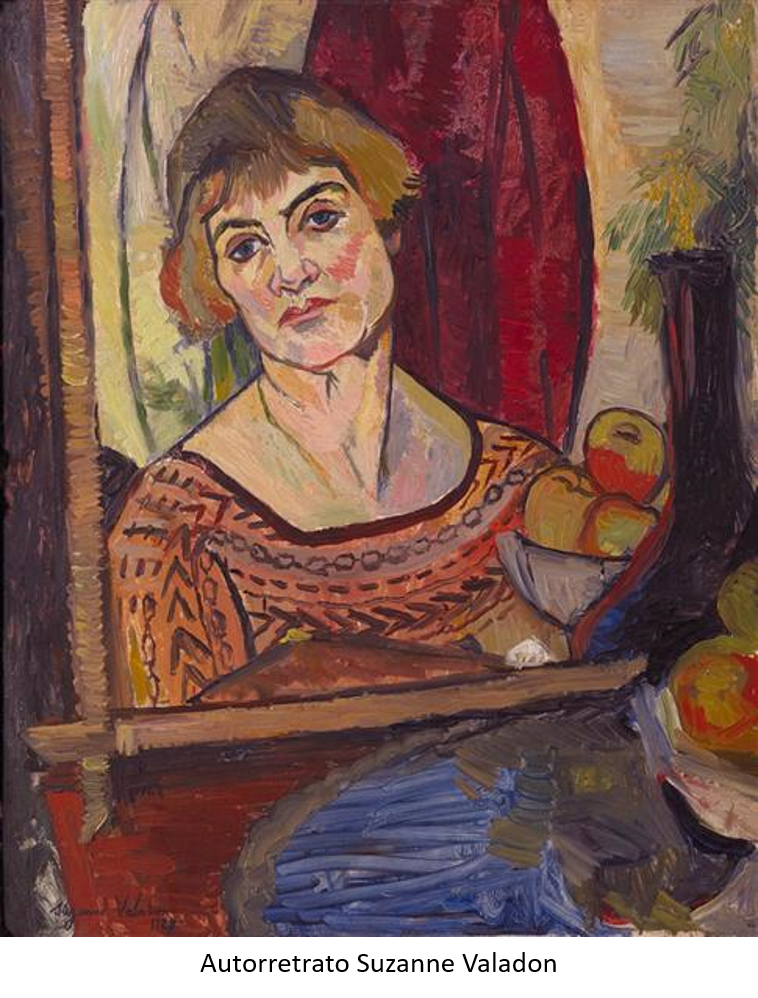
Valadon had a very happening love life as she was in multiple relationships in her life. She was a muse and lover/mistress to artists like Pierre-Auguste Renoir, Puvis de Chavannes, and Henrii de Toulouse-Lautrec. She met Spanish Engineer Miguel Utrillo when she was 15. Their relationship was deeply passionate and they lived an “artistic and bohemian life.”
Suzanne became a mother at a young age giving birth to her son Maurice Utrillo at the age of 18. Even though her relationship with Miguel Utrillo wasn’t exclusive, he gave Maurice his name and became his father.
Valadon also had an affair with composer Erik Satie who was deeply in love with her. He would write notes about her and call her his Biqui.
She eventually married a wealthy stockbroker Paul Moussis, leaving Satie devastated. They were married for thirteen years before she met 23-year-old Andre Utter.
Utter was Valadon’s son Maurice’s friend and the muse of many of her paintings including Adam and Eve.
She eventually got a divorce from Moussis in 1913 and married Utter in 1914. Andre became Suzanne’s and Maurice’s manager.
On April 7, 1938, Suzanne Valadon died of a stroke at the age of 72. She was buried next to her mother’s grave at the Cimetiere de Saint-Ouen in Paris.
Also Read: Princess Qajar: An Iconic Beauty Symbol of Persia






